The Voyage of the Granma and the Cuban Revolution
Fidel Castro's Epic Sea Odyssey
AFP / Getty Images
- Caribbean History
- History Before Columbus
- Colonialism and Imperialism
- Central American History
- South American History
- Mexican History
- American History
- African American History
- African History
- Ancient History and Culture
- Asian History
- European History
- Medieval & Renaissance History
- Military History
- The 20th Century
- Women's History
- Ph.D., Spanish, Ohio State University
- M.A., Spanish, University of Montana
- B.A., Spanish, Penn State University
In November 1956, 82 Cuban rebels piled onto the small yacht Granma and set sail for Cuba to touch off the Cuban Revolution . The yacht, designed for only 12 passengers and supposedly with a maximum capacity of 25, also had to carry fuel for a week as well as food and weapons for the soldiers. Miraculously, the Granma made it to Cuba on December 2 and the Cuban rebels (including Fidel and Raul Castro, Ernesto “Ché” Guevara and Camilo Cienfuegos ) disembarked to start the revolution.
In 1953, Fidel Castro had led an assault on the federal barracks at Moncada , near Santiago. The attack was a failure and Castro was sent to jail. The attackers were released in 1955 by Dictator Fulgencio Batista , however, who was bowing to international pressure to release political prisoners. Castro and many of the others went to Mexico to plan the next step of the revolution. In Mexico, Castro found many Cuban exiles who wanted to see the end of the Batista regime. They began to organize the “26th of July Movement” named after the date of the Moncada assault.

Organization
In Mexico, the rebels collected arms and received training. Fidel and Raúl Castro also met two men who would play key roles in the revolution: Argentine physician Ernesto “Ché” Guevara and Cuban exile Camilo Cienfuegos. The Mexican government, suspicious of the activities of the movement, detained some of them for a while, but eventually left them alone. The group had some money, provided by former Cuban president Carlos Prío. When the group was ready, they contacted their comrades back in Cuba and told them to cause distractions on November 30, the day they would arrive.
Castro still had the problem of how to get the men to Cuba. At first, he tried to purchase a used military transport but was unable to locate one. Desperate, he purchased the yacht Granma for $18,000 of Prío’s money through a Mexican agent. The Granma, supposedly named after the grandmother of its first owner (an American), was run down, its two diesel engines in need of repair. The 13 meter (about 43 feet) yacht was designed for 12 passengers and could only fit about 20 comfortably. Castro docked the yacht in Tuxpan, on the Mexican coast.
At the end of November, Castro heard rumors that the Mexican police were planning to arrest the Cubans and possibly turn them over to Batista. Even though repairs to the Granma were not completed, he knew they had to go. On the night of November 25, the boat was loaded down with food, weapons, and fuel, and 82 Cuban rebels came on board. Another fifty or so remained behind, as there was no room for them. The boat departed silently, so as not to alert Mexican authorities. Once it was in international waters, the men on board began loudly singing the Cuban national anthem.
Rough Waters
The 1,200-mile sea voyage was utterly miserable. Food had to be rationed, and there was no room for anyone to rest. The engines were in poor repair and required constant attention. As the Granma passed Yucatan, it began taking on water, and the men had to bail until the bilge pumps were repaired: for a while, it looked as if the boat would surely sink. Seas were rough and many of the men were seasick. Guevara, a doctor, could tend to the men but he had no seasickness remedies. One man fell overboard at night and they spent an hour searching for him before he was rescued: this used up fuel they could not spare.
Arrival in Cuba
Castro had estimated the trip would take five days, and communicated to his people in Cuba that they would arrive on November 30th. The Granma was slowed by engine trouble and excess weight, however, and didn’t arrive until December 2nd. The rebels in Cuba did their part, attacking government and military installations on the 30th, but Castro and the others did not arrive. They reached Cuba on December 2nd, but it was during broad daylight and the Cuban Air Force was flying patrols looking for them. They also missed their intended landing spot by about 15 miles.
The Rest of the Story
All 82 rebels reached Cuba, and Castro decided to head for the mountains of the Sierra Maestra where he could regroup and contact sympathizers in Havana and elsewhere. In the afternoon of December 5th, they were located by a large army patrol and attacked by surprise. The rebels were immediately scattered, and over the next few days most of them were killed or captured: less than 20 made it to the Sierra Maestra with Castro.
The handful of rebels who survived the Granma trip and ensuing massacre became Castro’s inner circle, men he could trust, and he built his movement around them. By the end of 1958, Castro was ready to make his move: the despised Batista was driven out and the revolutionaries marched into Havana in triumph.
The Granma itself was retired with honor. After the triumph of the revolution, it was brought to Havana harbor. Later it was preserved and put on display.
Today, the Granma is a sacred symbol of the Revolution. The province where it landed was divided, creating the new Granma Province. The official newspaper of the Cuban Communist Party is called Granma. The spot where it landed was made into the Landing of the Granma National Park, and it has been named a UNESCO World Heritage Site , although more for marine life than historical value. Every year, Cuban schoolchildren board a replica of the Granma and re-trace its voyage from the coast of Mexico to Cuba.
Resources and Further Reading
- Castañeda, Jorge C. Compañero: the Life and Death of Che Guevara. New York: Vintage Books, 1997.
- Coltman, Leycester. The Real Fidel Castro. New Haven and London: the Yale University Press, 2003.
- Biography of Ernesto Che Guevara, Revolutionary Leader
- Biography of Raul Castro
- Key Players in the Cuban Revolution
- Biography of Fulgencio Batista, Cuban President and Dictator
- Elian Gonzalez, the Cuban Boy Who Became a Political Pawn
- Buena Vista Social Club: Cuban Music Recaptures the World's Attention
- What Was the Mariel Boatlift From Cuba? History and Impact
- Cuba: The Bay of Pigs Invasion
- Cuban Revolution: Assault on the Moncada Barracks
- Biography of José Martí, Cuban Poet, Patriot, Revolutionary
- Population of Cuba: Data and Analysis
- Biography of Antonio Maceo, Hero of Cuban Independence
- The Haitian Revolution: Successful Revolt by an Enslaved People
- The History of Santo Domingo, Dominican Republic
- Biography of Toussaint Louverture, Haitian Revolution Leader
- The History and Culture of Pirate Ships
The Landing of the Granma
By j.a. sierra.
FEARING FOR THEIR LIFE after being released from prison on May 15 1955, Fidel Castro and his younger brother Raul went to Mexico City to organize the war against dictator Fulgencio Batista . "We will return when we can bring to our people the liberty and the right to live decently without despotism and without hunger," wrote Castro in the weekly Bohemia .
"Seventeen months were to pass from the time Castro left Havana until his disastrous and fateful return to Cuba," says New York Times journalist Herbert L. Matthews in his book Revolution in Cuba . "It was a frustrating, harassed, penurious time. The two great problems were to train his expeditionary force and raise the money for arms and a boat on which to get to Cuba. These had to be done in the face of constant interference by the Mexican police, treachery among the Cubans, and spying by Batista agents. At one time Castro and twenty-two of his comrades spent three weeks in a Mexico City jail for illegally possessing arms."
Shortly after arriving in Mexico, the Castros were introduced to a young Argentine physician named Ernesto Guevara . "I had been linked to him from the outset by a tie of romantic adventurous sympathy," writes Guevara in Reminiscences of the Cuban Revolutionary War , "and by the conviction that it would be worth dying on a foreign beach for such a pure ideal." Guevara joined the expedition as the revolutionary army's official doctor.
A leisure yacht named Granma was secured for the trip to Cuba. Although seaworthy, the ship was not in the best shape. Badly worn gears prevented the ship from achieving significant speed, and the radio could only receive, making it impossible to communicate with allies in Cuba. The craft was overcrowded with weapons, ammunition, and 82 soldiers. To make matters worse, the ship's tanks held 1,200 gallons of fuel, not nearly enough to reach Cuba, so an additional 2,000 gallons, in cans, were stored on deck.
"It was 1:00 a.m., November 25 1956, and time to leave," recalls Faustino Pérez in Diary of the Cuban Revolution . "As quietly as possible, with only one engine going at low speed and all her lights out, the Granma began to pull away. We were crouched so close together that we were almost on top of one another. The helmsman followed the middle of the channel toward the river's mouth. On either side of us, the city slept on. It took half an hour to leave the river, and perhaps another half an hour to cross the harbor. No one had seen us, and were now entering the gulf."
"The departure was hasty," writes Matthews in The Cuban Story , "for the Mexican authorities were after him. There was little food; the boat--which could comfortably accommodate no more than a dozen men-was dreadfully overcrowded; the Granma's engines were bad. Everything seemed to go wrong. It had been arranged that his 26th of July followers in Santiago de Cuba would rise on November 30, the day Fidel and his band were supposed to land. There was a brave, but of course, futile uprising on November 30, with Fidel far out to sea."
On the last day of the journey, ex-navy lieutenant Roque fell overboard. "The Granma's search lights were turned on for the first time," recalls Faustino Pérez in Diary of the Cuban Revolution , "when it was more dangerous than ever. Nothing helped. Our comrade was being swallowed by the deep. Never willing to give up, Fidel ordered one more search. We heard the cry "Here!" again, weaker but inexplicably closer now. Pichirilo Mejías, our brave, efficient Dominican helmsman, saw him first and miraculously rescued him. His strength, his ability, his level headedness, as well as Fidel's faith and the efforts of his comrades had saved his life."
The landing of the Granma , in December 1956, was planned to re-enact the route that José Martí had followed to begin Cuba's War of Independence in 1895. The target landing spot was a town called Niquero, in Oriente province. Still waiting for them on December 2 was Celia Sánches, one of the founders of the July-26-Movement , with an assortment of trucks, jeeps, food, weapons and about 50 men.
Leaking and running days behind schedule, the Granma was spotted by a helicopter, and the rebels were forced to beach the ship at a spot called Playa de los Colorados, near the village of "Las Coloradas," about fifteen miles south of the designated spot. The new landing area was more of a swamp than a beach, and the rebels were unable to unload most of their weapons due to the muddy waters, the thick undergrowth plant life and small crabs.
"Just consider where the landing took place," says Celia Sánchez in The Twelve , a book by Carlos Franqui about the early days of the struggle against Batista. "If they had debarked right on the beach instead of at the swamp, they would have found trucks, jeeps, gasoline. It would have been a walkaway."
The troops regrouped inland and began to move toward the Sierra Maestra, unable to find anything to eat that first day. Along the way, peasants and farmers gave them food and water, until on December 5, betrayed by their guide, the rebels were ambushed at Alegría de Pío. They were forced to scatter again, and most were killed in battle, or as they attempted to surrender.
For eleven days the remaining rebels, wounded, hungry and scattered, evaded Batista's army, regrouping on December 18 deep inside the Sierra Maestra Mountains.
Of the 82 who made the trip from Mexico, only twelve made it to the Sierra Maestra, including the Castro brothers, Che Guevara (wounded and bleeding), Camilo Cienfuegos, Juan Almeida, Efigenio Amejeiras, Ciro Redondo, Julio Díaz, Calixto García, Luis Crespo, Jose Ponce and Universo Sanchez. "We will win this war," said Castro, "we're just beginning to fight!"
Related : Escape to the Sierra Maestra by Che Guevara | Frank País and the Underground Movement in the cities, and Battle of Jigüe , from Terrence Cannon's: REVOLUTIONARY CUBA | Contents: Before the Revolution
Return to 1956
Old News, Vintage Photos & Nostalgic Stories
Granma yacht: the vessel which brought the cuban revolution in cuba.
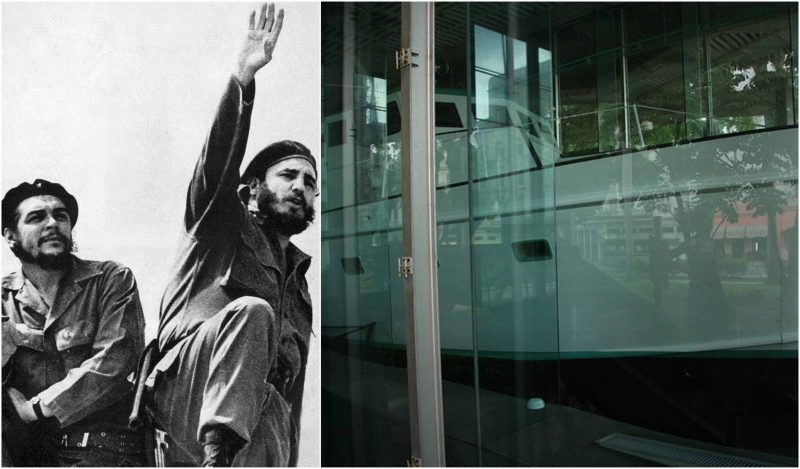
On November 1956, Fidel Castro, Che Guevara, Camilo Cienfuegos, and Castro’s brother, Raul Castro, along with 80 other fighters, departed from the Mexican port of Tuxpan, Veracruz and headed to Cuba on the yacht “Granma.” The 60-foot (18 meters) diesel-powered cabin cruiser, originally designed for twelve people, brought the Cuban revolutionaries who overthrew the regime of Fulgencio Batista.
The cruiser was built in 1943, and it is said that it was originally named after the grandmother of the original owner. However, the revolutionaries called the yacht simply “Granma,” as an affectionate term for a grandmother. The yacht was purchased only a month before the revolution, on the 10th October 1956. It was bought from the United States for MX$ 50,000 (US$15,000), through a gun dealer Antonio “The Friend” del Conde from Mexico City.
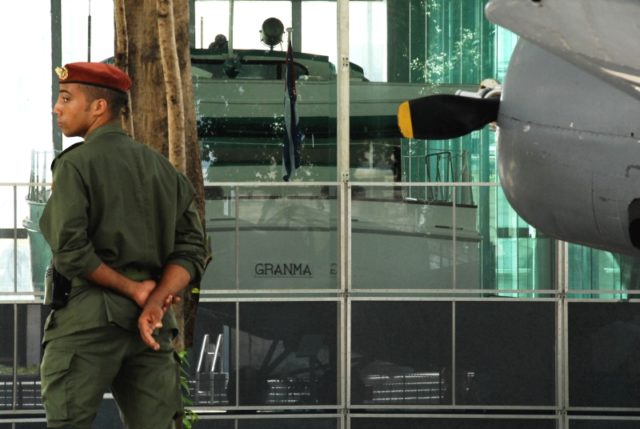
Castro’s initial plan for crossing the Gulf of Mexico was to purchase a US naval crash rescue boat or a Catalina flying boat maritime aircraft. However, he wasn’t able to realize his idea due to the lack of funds. The money for the “Granma” yacht was donated to the revolution by the former Cuban President Carlos Prío Socarrás and Teresa Casuso Morín, a prominent Cuban intellectual, and writer, who fought for freedom and democracy in Cuba.
The Cuban Revolutionaries, later known as “Los expedicionarios del yate Granma” (“The Granma yacht expeditioners”) set out from Tuxpan shortly after midnight, on the 25th November. For more than a week, the members of the expedition experienced sea-sickness, diminishing supplies, and a leaking craft until the 2nd December, when the 82 revolutionaries arrived on Playa Las Coloradas, municipality of Niquero, today known as Granma Province. The location was chosen by the Cuban national hero, Jose Marti.
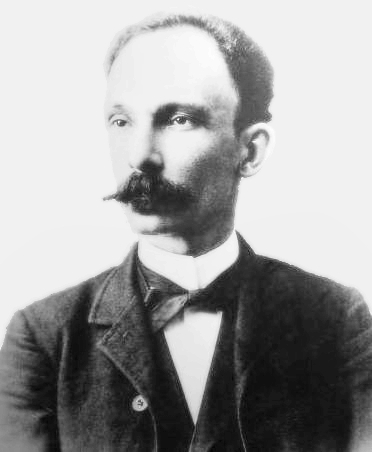
The site was chosen by the Cuban national hero, Jose Marti. He had landed at the very same location 61 years earlier, during the independence wars from the Spanish colonial rule. The yacht was navigated by Castro’s ally and the Cuban Navy veteran, Norberto Collado Abreu.
Here’s what Che Guevara has written about the landing: “We reached solid ground, lost, stumbling along like so many shadows or ghosts marching in response to some obscure psychic impulse. We had been through seven days of constant hunger and sickness during the sea crossing, topped by three still more terrible days on land. Exactly ten days after our departure from Mexico, during the early morning hours of December 5th, following a night-long march interrupted by fainting and frequent rest periods, we reached a spot paradoxically known as Alegría de Pío (Rejoicing of the Pious)”. Ernesto “Che” Guevara (World Leaders Past & Present) by Douglas Kellner, 1989, Chelsea House Publishers, pg 40.
After the triumph of the revolution on 1st January 1959, the yacht was transferred to Havana Bay and its pilot, Norberto Collado Abreu, got the job of guarding and preserving the cabin cruiser. Since 1976, the “Granma” is on permanent display in a glass enclosure at the Granma Memorial adjacent to the Museum of the Revolution in Havana.
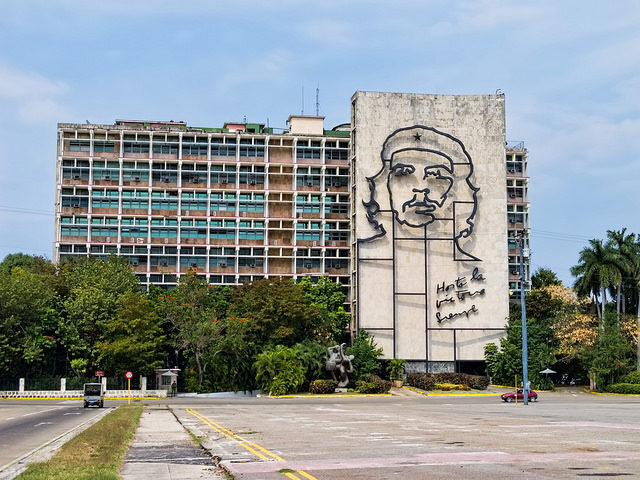
The location of the Granma landing, Playa Las Coloradas, was declared “Granma National Park,” a World Heritage Site by UNESCO, for its natural habitat.
Read another story from us: CIA attempted to assassinate Fidel Castro on 638 occasions
On 2nd December, when Cuba celebrates the “Day of the Cuban Armed Forces,” a replica of the vessel has been paraded at state functions to commemorate the original revolutionary voyage. Granma is also the official newspaper of the Central Committee of the Cuban Communist Party. As a matter of fact, the name has become an icon of the Cuban communism.

- The New Wheeler 55
- The New Wheeler 38
- Earlier Yachts
- News & Events
The Boat that Kept the Cuban Revolution Afloat
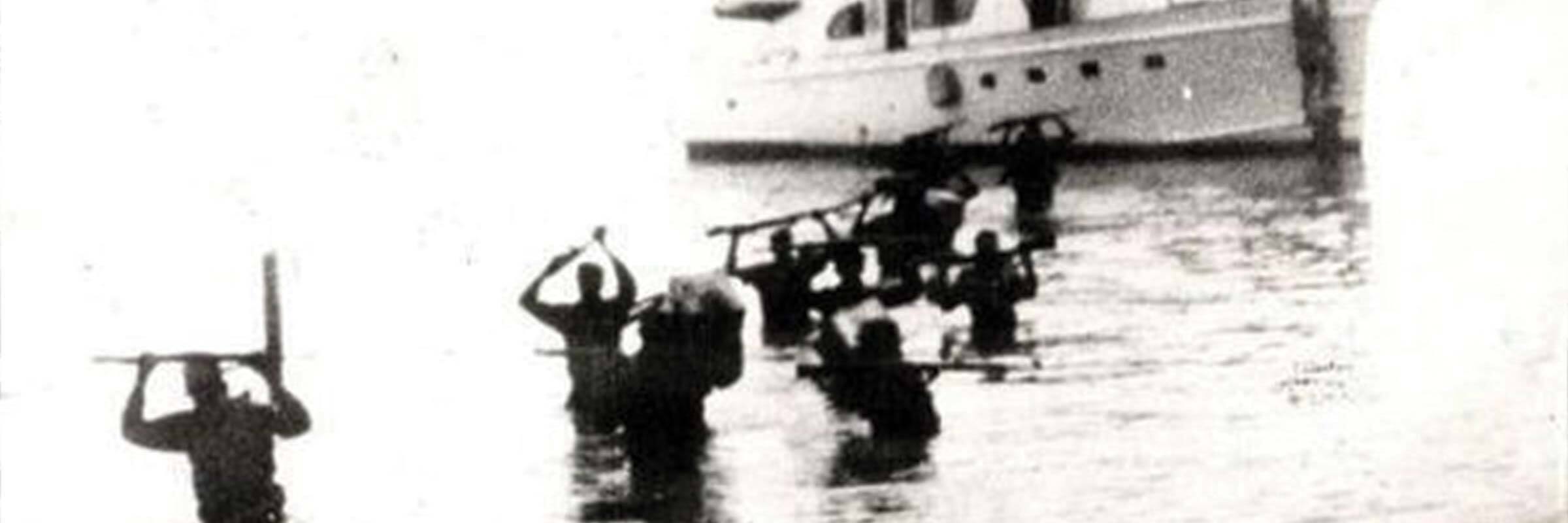
On a windy November evening, a band of rebels huddled anxiously on the banks of Tuxpán River. They were former convicts and future world leaders, Naval officers and weapons smugglers — each willing to risk their life to overthrow a murderous dictator.
Overhead an ominous sky loomed, foreshadowing a harrowing voyage ahead.
Standing between the men and their destiny was a treacherous 1,200 nautical mile journey. And despite stormy seas, poor planning and the infinitesimal odds of overpowering Cuba’s military forces, their ship kept their mission afloat.
That ship was a 58-foot Wheeler warship named Granma.
Granma’s Origins
Howard E. Wheeler Sr. founded The Wheeler Shipyard Corporation in 1910 in Brooklyn, New York, to build high-quality, beautifully designed yachts up to 85 feet in length. By the late 1930s, demand was so high they had to expand their facilities to ramp up production.
Shortly after the United States entered the war in late 1941, the government leased land near the Whitestone Bridge in Queens to the Wheeler shipbuilders. Wheeler immediately switched gears to support America’s defense and began producing a fleet of ships for the Navy, Army and Coast Guard. All pleasure boatbuilding was halted.
Granma was originally designed and commissioned for military use as part of a much larger fleet of ships for the war effort. Her carvel-planked hull was made of long-leaf pine on oak frames designed to accommodate 12 passengers with a cruising speed of 9 knots.
After the war, the military ships built by Wheeler were either sold, scuttled or repurposed for private use.
In 1950, Granma first appeared on U.S. Coast Guard records registered to Baton Rouge businessman Robert Erickson . While on a Gulf cruise, Erickson and his wife fell in love with Tuxpán, Mexico, on the banks of Tuxpán River. They decided to build a vacation home there and slept on their yacht while construction was underway.
One frightening night, the Ericksons awoke in Granma’s cabin to thieves who threatened their lives and took all their valuables. Souring their dream, the Ericksons changed tack and relocated to Mexico City, leaving their beloved boat behind. When a storm rolled through Tuxpán, most likely a direct hit from Tropical Storm Florence in 1954, the story of Granma was almost sunk for good.
Granma’s Unlikely Rebirth
Over a thousand nautical miles away in Cuba, Fidel Castro had instigated an ill-fated armed revolt against the Batista government at the Moncada Army Barracks , which led to a 15-year prison sentence. However, under public pressure, Batista released Castro and his collaborators just two years later, a decision that would come back to haunt him.
Fidel and his brother Raúl fled to Mexico, a hub of anti-Batista activists at the time, including Argentinian Marxist Ernesto “Che” Guevara and Mexican arms dealer Antonio Del Conde . Guevara and Del Conde were the exiles’ closest allies in Mexico City, sharing Fidel’s ideals and arming, hiding, funding, feeding and training his growing rebel band.
While passing through Tuxpán to run errands for the rebels, Del Conde saw a white hull peeking out of the marsh grass on the edge of the river. The ship was clearly wrecked, but the name on the transom was legible: Granma. Del Conde was so captivated by the ship’s beauty, he tracked down the Ericksons in Mexico City. While Granma’s diesels were inundated, her keel was broken and the entire boat was generally a mess after being partially submerged, Del Conde was undeterred in his desire to purchase her. He offered the Ericksons $20,000 — equivalent to more than $220,000 today — to buy a ship requiring significant repairs to ever become seaworthy again.
A Bigger Vision for Granma
Granma became Del Conde’s prized possession. He knew it would take him years to restore the ship to her former glory, but he was committed.
His comrade Fidel was also committed … to plotting a revolution. He fervently believed if he could make it to Cuban shores and survive for 72 hours he would be triumphant in overthrowing Batista. After shooting practice one day, Del Conde went to the river to check on Granma, unaware that Fidel followed him. When he set eyes on the mangled ship, Fidel declared his return to Cuba would be on that very boat.
In an instant, Del Conde’s timeline to restore Granma went from years to weeks. He and his team replaced the keel, planks, generator, lights and wiring. The two diesel engines were sent to a GM factory in Mexico City to be repaired. Del Conde commissioned his armory to fabricate new fuel tanks that maximized the space below deck. Sea trials were conducted to establish fuel burn statistics, but without the tonnage of dozens of men and gear on board, their calculations were merely a stab in the dark.
Sailing into the Storm
November 30, 1956, was the date chosen for an attack against the Cuban military, where allies on the island were expecting Fidel’s amphibious force to lead the fight. Castro knew the journey would take a minimum of five days; yet inexplicably he chose November 25 to depart, ignoring the stormy weather forecast and leaving he and his crew no margin for error.
On the evening of the 25 th , Castro’s band of 140 rebels congregated on the bank of Tuxpán River. This posed the first of many challenges – Granma was designed to carry 12 passengers or up to 25 for short trips. Fidel selected 81 men from the group for the mission, including his brother Raúl, trusted aide Ché Guevara and Norberto Collado , a WWII Naval hero with expert navigation skills and an uncanny resistance to seasickness. They packed onto the ship like sardines, shoulder to shoulder with no life vests, only oranges to eat and the hope that they had enough fuel to get to Cuba.
Under the cover of darkness, they sailed down the river and into the Gulf of Mexico where furious seas and 30-knot wind gusts greeted them with impunity.
Tumultuous waters lifted Granma and threw her from cresting waves so hard that the men feared she would sink beneath their feet. The seasick passengers were packed in so tightly they had no choice but to vomit on one another. With the horrendous stench permeating the ship, things went from bad to worse over the next eight hours. The transmission struggled and the men had to bail water out of the boat after the bilge pump failed and Granma took on dangerous amounts of seawater.
For days, Granma’s heavy load struggled against the waves, wind and current. At the helm, Collado slowed her speed to just 6.7 knots, further delaying the crew’s anticipated arrival time.
Ironically, overloading the ship actually made Granma more stable. The weight provided resistance against the roiling seas, without which she would have likely overturned.
Finally, on the third day, the frontal system passed and gave way to mellower seas and sunny skies. After some engine tinkering and winds that calmed to manageable trade winds of 20 knots, Collado revved up Granma to 7.5 knots and steered her toward Cuba.
Making Landfall
Against all odds, Granma’s sturdy construction had delivered them to this point. But their luck was about to run out.
None of the passengers had anticipated such an arduous journey, and misfortune continued to follow them onto land. Guided by the Cape Cruz light, Granma reached Cuba three days behind schedule and not at Castro’s intended rendezvous point with his allies.
Their nautical charts for the coast had been wrong. Their fuel was low. Dawn was approaching. And unbeknownst to them, Batista had caught wind of their surprise attack.
Fearful of being discovered by enemy air patrols, Castro ordered Collado to run Granma aground at full throttle about 100 yards from mangroves. More shipwreck than amphibious assault, the woozy sailors quickly began loading mortars and machine guns into a dinghy, which promptly sank. They had no choice but to lower themselves into chest-deep water and carry their rifles over their heads into the swamp.
The rebels marched through the mangrove forest, but just three days later, their guide betrayed them by leading them straight into an ambush by government troops.
Nearly all of Fidel’s men were killed or captured. A few lucky souls eluded either fate: the Castro brothers, Ché Guevara and about a dozen other men managed to reach the safety of the Sierra Maestra mountains.
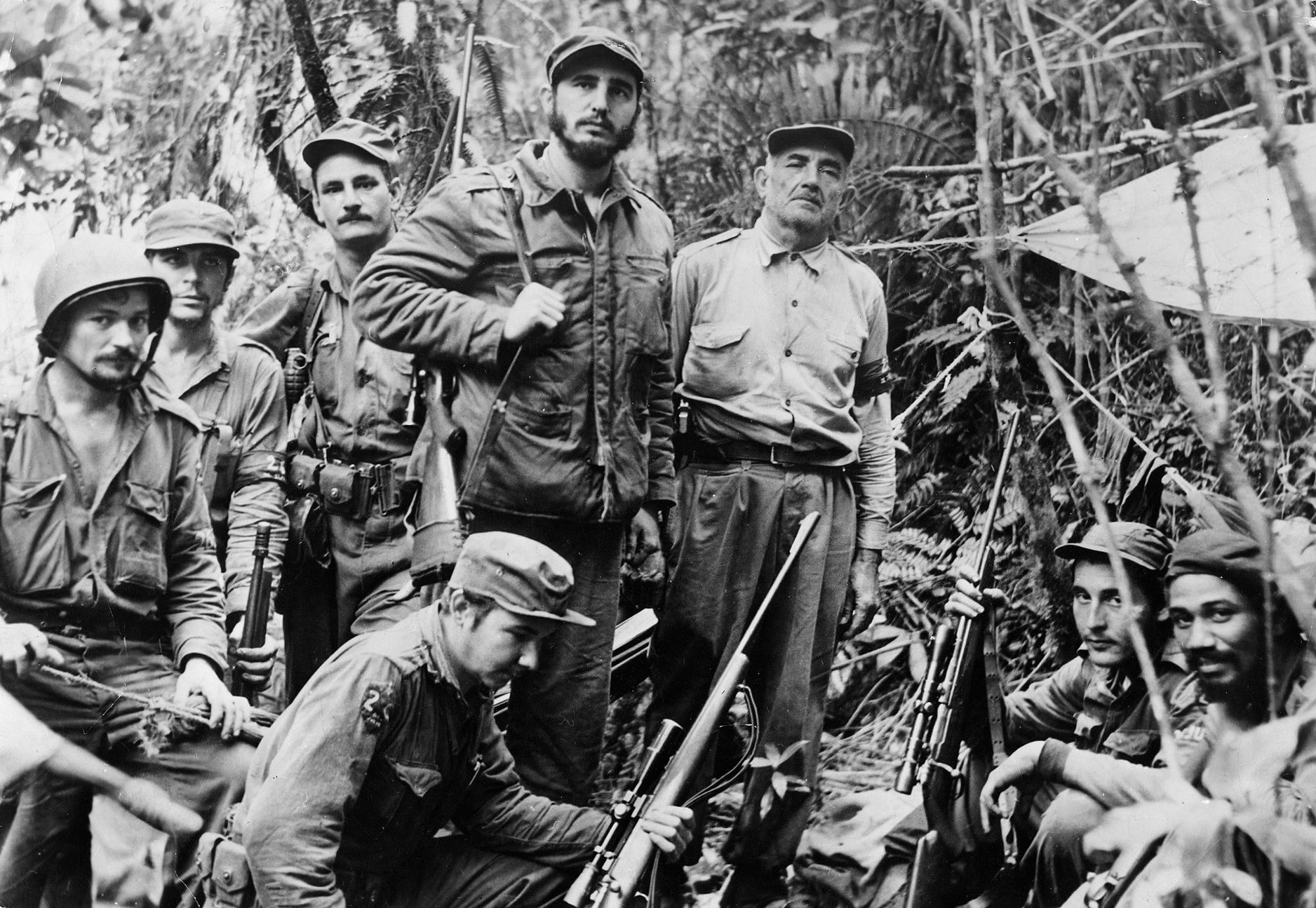
The Aftermath
While the initial coup did not go as planned, Fidel and a handful of his comrades lived to fight another day . They rallied a force of about 300 insurgents who took up arms in a succession of victories against government forces. As Fidel’s forces swarmed to nearly 1,000 men, Batista fled to the Dominican Republic in January of 1959. With the previous dictator gone, Fidel’s revolutionary army seized the capital and put him into power for the next five decades.
Granma Today
Norberto Collado was one of the captured rebels during the unsuccessful coup. His comrades freed him from prison in 1959 and he returned to military service. He rose to the rank of captain, and one of his duties was being the caretaker for their beloved Granma.
The Erickson’s former house in Tuxpán was turned into The Mexico-Cuba Friendship Museum , where Granma’s important role in the Cuban Revolution is on full display. You can find Granma restored to pristine condition in a glass-structure behind the Museum of the Revolution in Havana .
Comments are closed.
Sign up to the newsletter to get the latest updates. One-click subscription.
- The Wheeler Story

Editor's Note: A bit of history not included in this piece about Granma is that, although seaworthy, the ship was not in the best shape, according to Historyofcuba.com . "Badly worn gears prevented the ship from achieving significant speed, and the radio could only receive, making it impossible to communicate with allies in Cuba. The craft was overcrowded with weapons, ammunition, and 82 soldiers. To make matters worse, the ship's tanks held 1,200 gallons of fuel, not nearly enough to reach Cuba, so an additional 2,000 gallons, in cans, were stored on deck."
In Diary of a Cuban Revolution Faustino Pérez recalled , "It was 1:00 a.m., November 25 1956, and time to leave. As quietly as possible, with only one engine going at low speed and all her lights out, the Granma began to pull away. We were crouched so close together that we were almost on top of one another. The helmsman followed the middle of the channel toward the river's mouth. On either side of us, the city slept on. It took half an hour to leave the river, and perhaps another half an hour to cross the harbor. No one had seen us, and were now entering the gulf."
There’s a famous anecdote about the voyage of the Granma, the tiny vessel that left Mexico sixty years before the day that Fidel Castro died this week. As the boat was nearing its destination in the east of Cuba, after two years of preparation, a man fell overboard. Possibly wrecking the entire mission, Fidel Castro refused to leave. The overloaded yacht went round and round in the dark until the man was finally spotted and rescued.
On December 2, 1956 Granma lands, or more precisely, runs aground several miles from the intended landing in Oriente province. Twenty of the 82 who sailed from Mexico on the Granma had participated in the Moncada and Bayamo attacks. Of the 82 who made the trip from Mexico, only 12-20 made it to the Sierra Maestra, including the Castro brothers, Ché Guevara (wounded and bleeding), and Camilo Cienfuegos.

Encased in a glass box on one of the main plazas in old Havana is a small and ordinary fishing boat called “El Granma.” Sixty years ago a young group of socialist militants led by Fidel Castro crossed the Gulf of Mexico on it, igniting a revolution that would affect the region for decades to come.
Today, “the Grandma,” as it translates into English, is part of the revolutionary mythology of Latin America. Among other things, the main daily newspaper of Cuba’s communist party is named after it. And according to Mexican journalist Jacobo Zabludovsky, the man who helped set it all up was a Mexican Jew named Jorge Besquin.
In 1956 Castro, whose death last Friday is currently being both mourned and celebrated around the world, was living in exile in Mexico City, where he fled in 1955, after having spent two years in prison for a failed coup. It was there that he published his manifesto, trained his troops, and plotted to return to Cuba via an assault on the island to start a revolutionary movement.
Little is known about Besquin, except that he was an oil engineer and friend of Castro and that––together with Antonio “El Fofo” Gutierrez––he played an integral part in funding the purchase. Eventually it was Antonio el Condo who bought the boat in Tuxpan, Veracruz.
Read the full story.
Add Comment
Thank you for submitting.
Your comments will be approved and displayed once they are reviewed by our editors.
Waterway Guide reserves the option to edit comments submitted here for clarity and facts. The opinions expressed are always the writer's own. We may confer with letter writers about editing to the extent that deadlines allow.
A is a facility where you can keep your boat tied in a slip.
The captcha question was answered incorrectly.
Current Review Policies
Waterway Guide reserves the option of editing reviews and comments for grammar, clarity and the removal of defamatory or potentially slanderous language. When appropriate, reviews are forwarded to businesses for response prior to being made public. We will make every effort to be objective and impartial when posting reviews, but do not publicize details of disputes between parties.
- Comments are reviewed and/or verified by Waterway Guide staff and do not post immediately. Please use a valid email address so that we can contact you if we need clarification (email address will not be published).
- Name will be published. Anonymous comments may not be posted.
- Comments will be shared with the reviewed marina to offer them an opportunity to respond. If they choose to do so, the marina’s comments may also be posted in response to the original comment.
- Comments containing foul or obscene language will be rejected or returned for resubmission.
- Comments containing personal attacks will be rejected or returned for resubmission.
- Off-topic content will be rejected.
- Comments must describe commenter's personal experience – “hearsay” reports will be rejected.
- Comments must be understandable and clear enough to inform other boaters.
- URL links are allowed only if they inform the content – no “advertising” your business or blog.

- 4,000 Marinas
- Thousands of anchorages
- Updated Charts
- Mile-by-Mile Navigation
- Highlighted Alerts & Cautions
- Full-Color Aerial Photographs
The Waterway Guide App Makes it easy to leave reviews, use our explorer, and view waterway guide materials all on the go!

- Download The App
- Destinations
- Knowledge Center
Apple Sign-In

Sign up to get Navigation Alerts and News delivered to your inbox!
Invalid Email
Invalid Captcha
Check out our latest newsletter
Newsletter Sign-Up
The email is invalid. Please close the modal window and try again.
Signing-up...
Granma Memorial
- Homepage Homepage
- Current: Granma Memorial
- Museum details
- Visitor information
Exhibitions
- #10 in Cuba
- #10 in Havana
Granma Memorial and its collection
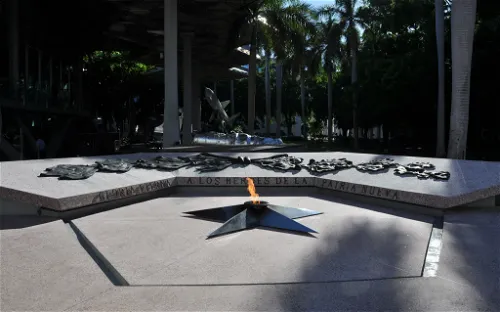
The Granma is an 18-meter yacht that was built in 1943 and purchased in Mexico in 1956 by rebels against the regime of dictator Fulgencio Batista. This group of rebels included notable figures such as Fidel Castro, his brother Raúl Castro, Camilo Cienfuegos, and Ernesto 'Che' Guevara. The yacht is a significant part of Cuban history and is now a museum ship at the Museum of the Revolution.
The Granma as a Museum Ship
The Granma, once a symbol of rebellion and revolution, is now a museum ship at the Museum of the Revolution in Havana. Visitors can explore the yacht and learn about its historical significance and the role it played in the Cuban Revolution.
Read more…
History & Anthropology History & Anthropology Science & Technology Science & Technology Historic house War
#1 Science & Technology in Cuba #8 History & Anthropology in Cuba #1 Science & Technology in Havana #8 History & Anthropology in Havana
- View on map
Images of Granma Memorial

Visitor information Granma Memorial
Opening hours.
| Normal rate | CUP 3.00 |
We don't have information about the facilities of Granma Memorial.
Location & Map
Habana Vieja, Havana
Discover all museums in Havana
No exhibitions in Granma Memorial have been found.
Granma Memorial Reviews
Granma Memorial has 1 rating.
This rating is based on the rating of this museum on several other platforms.
Write a review
Your review helps other people learn about great and less great museums. If you've visited Granma Memorial, you can write your review below! Please pay attention to our content guidelines before you post your review.
Nearby and in or around Havana
Discover museums near Granma Memorial in or around Havana.
National Capitol Building
Museum of the revolution, tres reyes del morro's castle, havana club rum museum, st. francisco de asís basilica, fort of san carlos of the cabin.
- History Classics
- Your Profile
- Find History on Facebook (Opens in a new window)
- Find History on Twitter (Opens in a new window)
- Find History on YouTube (Opens in a new window)
- Find History on Instagram (Opens in a new window)
- Find History on TikTok (Opens in a new window)
- This Day In History
- History Podcasts
- History Vault
This Day In History : January 8
Changing the day will navigate the page to that given day in history. You can navigate days by using left and right arrows

Fidel Castro arrives in Havana after deposing Batista’s regime

On January 8, 1959, a triumphant Fidel Castro enters Havana, having deposed the American-backed regime of General Fulgencio Batista. Castro's arrival in the Cuban capital marked a definitive victory for his 26th of July Movement and the beginning of Castro's decades-long rule over the island nation.
The revolution had gone through several stages, beginning with a failed assault on a barracks and Castro's subsequent imprisonment in 1953. After his release and exile in Mexico, he and 81 other revolutionaries arrived back in Cuba on a small yacht, the Granma , in 1956. Over the course of the next two years, Castro's forces and other rebels fought what was primarily a guerrilla campaign, frustrating the significantly larger forces of Batista. After a failed offensive by Batista's army, Castro's guerrillas descended from their hideouts in the southern mountains and began to make their way northwest, toward Havana. Outnumbered but supported by most of the civilians they encountered along the way, Generals Ernesto "Che" Guevara and Camilo Cienfuegos captured the city of Santa Clara on December 31, 1958, prompting Batista to flee the country. When he heard the news, Castro began what was essentially a victory parade, arriving in Havana a week later.
Castro became Prime Minister of Cuba the following month and played a leading role in the construction of a new state. Contrary to commonly held beliefs, he did not immediately institute a communist regime. Rather, he quickly set out on a goodwill tour of the United States, where President Dwight D. Eisenhower refused to meet with him, and traveled the Americas gathering support for his proposal that the U.S. do for its own hemisphere what it had done for Europe with the Marshall Plan .
Despite these overtures, Castro's government would inevitably become aligned with the other side of the Cold War divide. Castro's reforms included the redistribution of wealth and land and other socialist priorities that were unfriendly to foreign businesses, leading to a feud with the United States and a close alliance with the Soviet Union. This rivalry—which nearly led to a nuclear war between the superpowers just three years later—has shaped the recent history of the region. Castro would rule until the early 2000s, when he was replaced by his brother. During that time, an American embargo of Cuba stymied Castro's dreams of a socialist republic, and hundreds of thousands fled his increasingly despotic regime. The Cuba that he left behind was a far cry from the one he hoped to build as he entered Havana, but Castro remains one of the most influential political figures of the 20th century. He died in 2016.
How the Castro Family Dominated Cuba for Nearly 60 Years
In 2019, the island nation long ruled by dictator Fidel Castro and his family, got a new leader: Miguel Díaz‑Canel.

Fidel Castro
During Fidel Castro’s tenure as President of Cuba, he survived an estimated 638 attempts on his life – and that’s just from the CIA.
Cuban Revolution
The Cuban Revolution was an armed uprising led by Fidel Castro that eventually toppled the brutal dictatorship of Fulgencio Batista by 1959.
Also on This Day in History January | 8

NCAA grants freshmen eligibility in football, basketball
President george w. bush signs no child left behind act into law, african american men gain the right to vote in washington, d.c., the u.s. national debt reaches $0 for the first time, infamous drug lord "el chapo" is captured by mexican authorities, president george h.w. bush vomits on the prime minister of japan.

Wake Up to This Day in History
Sign up now to learn about This Day in History straight from your inbox. Get all of today's events in just one email featuring a range of topics.
By submitting your information, you agree to receive emails from HISTORY and A+E Networks. You can opt out at any time. You must be 16 years or older and a resident of the United States.
More details : Privacy Notice | Terms of Use | Contact Us
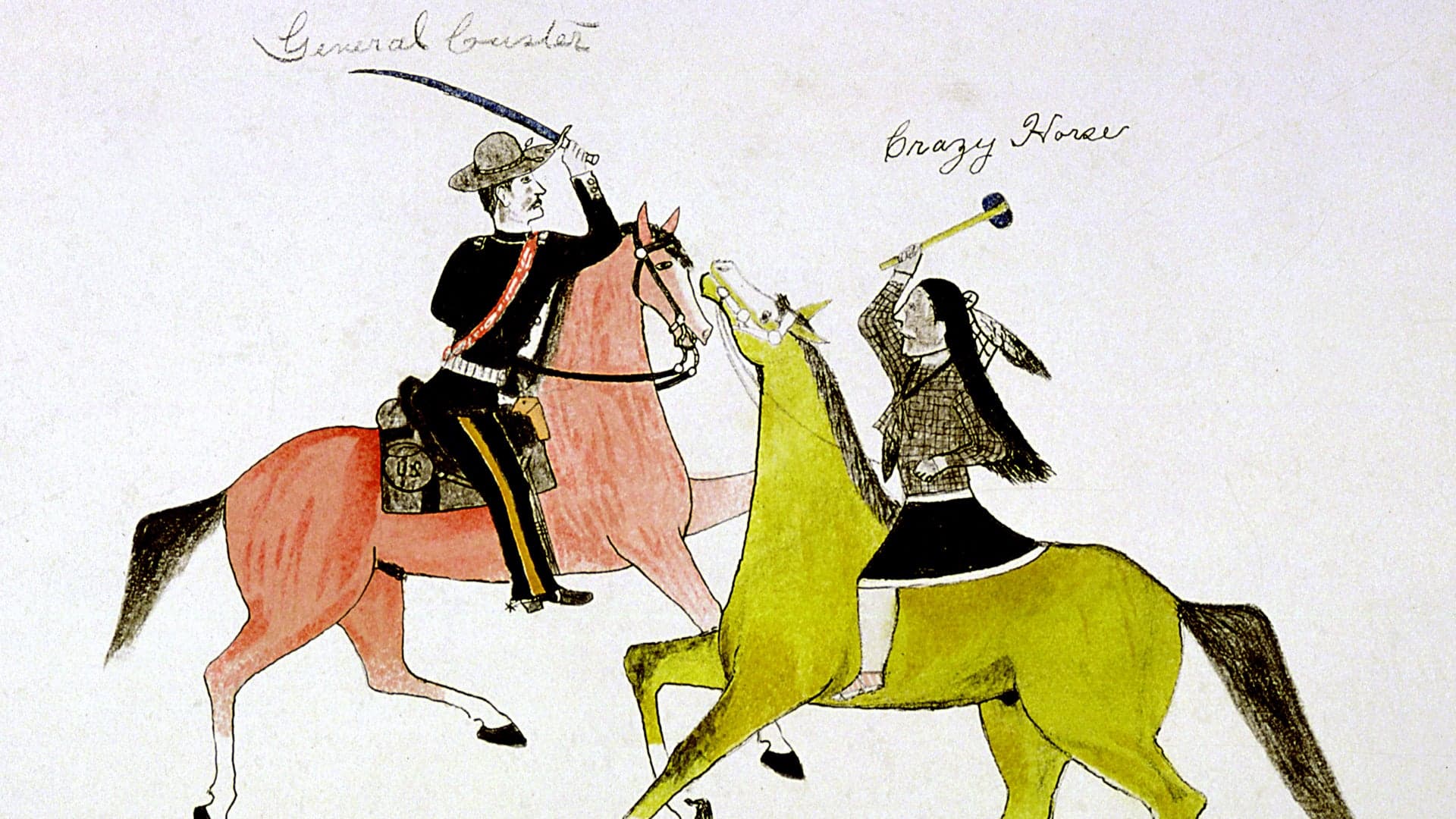
This Day in History Video: What Happened on January 8

Congresswoman Gabrielle Giffords injured in shooting rampage
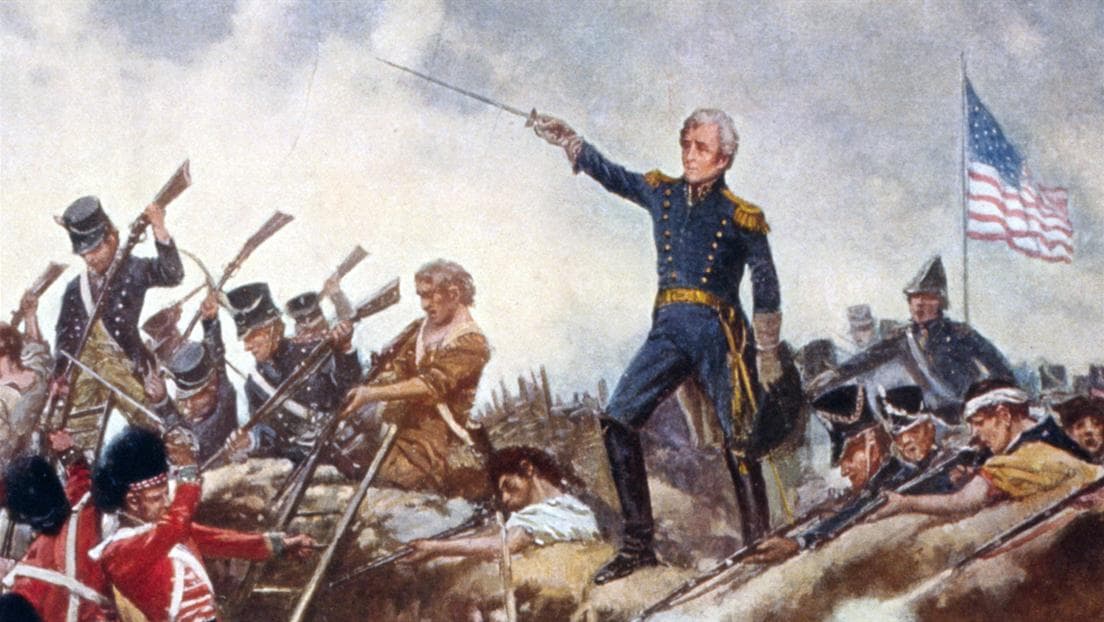
The Battle of New Orleans
"mona lisa" exhibited in washington, astronomer galileo dies in italy, allies retreat from gallipoli.
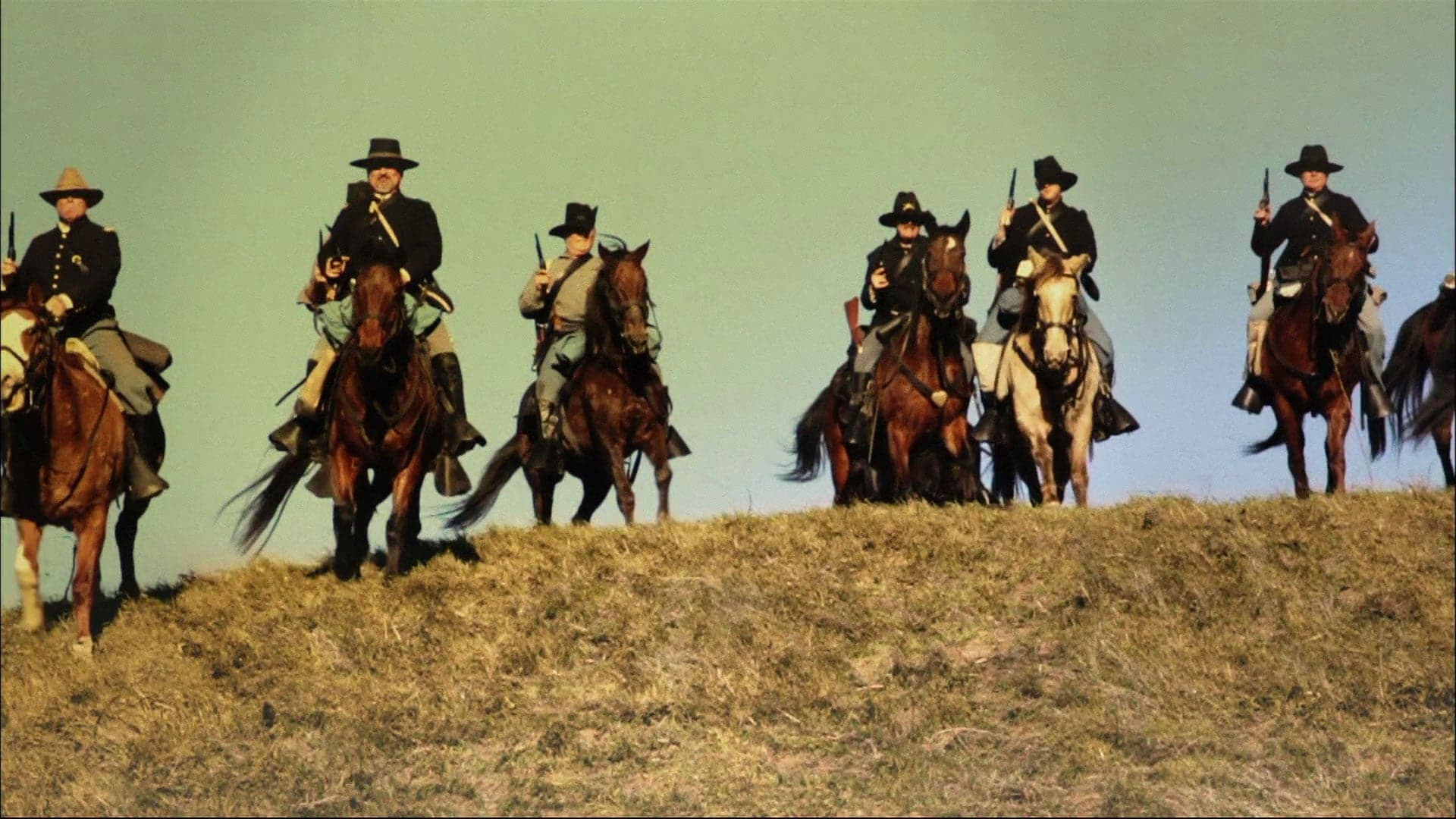
Crazy Horse fights last battle
Mussolini questions hitler’s plans.
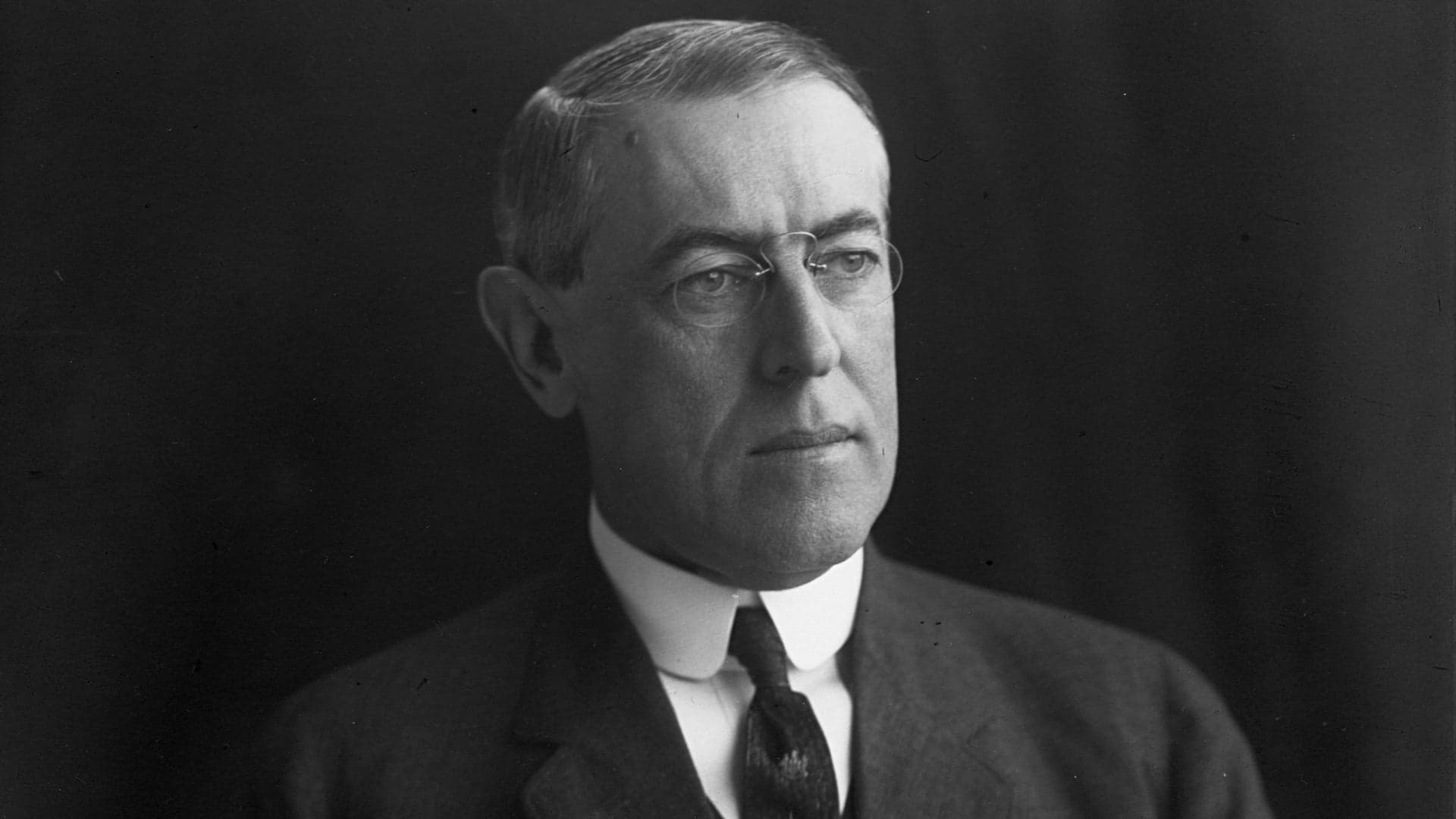
President Wilson delivers "Fourteen Points" speech
- Español
- Français
- Português

HAVANA, SEPTEMBER 16, 2024
OFFICIAL VOICE OF THE COMMUNIST PARTY OF CUBA CENTRAL COMMITTEE
Reliving the granma landing.
Topics relating to the Granma expedition will be debated at the original landing site
Author: Darelia Díaz Borrero | [email protected]
november 25, 2016 09:11:52

NIQUERO, Granma.— Little known facts about the landing of the Granma yacht on December 2, 1956, will be the focus of debates by museologists and historians in the municipality of Niquero, the setting of the historic event that marked the beginning of the final stage of the struggle for Cuba’s liberation.
The analyzes will form part of the 14th edition of the “La epopeya del Granma” event, sponsored by the Municipal Museum of Niquero, the Directorate of Culture in Granma, and the provincial branch of the Union of Historians of Cuba, on the occasion of the 60th anniversary of the feat.
The event will be attended by René González Barrios, president of the Cuban History Institute and Jorge Luis Aneiro, deputy director of the Office of Historical Affairs of the Council of State, as Juan Francisco Cabrera, a research specialist at the Municipal Museum of Niquero, told reporters.
Francisco Cabrera noted that some 25 papers will be presented during the event, which brings together researchers from Havana, Santiago de Cuba, and the host territory.
He added that the event, to be held at the Municipal Museum and the Las Coloradas Monument, will run through December 1st, and includes the presentation of a documentary on the landing of the Granma yacht.
He noted that the film, made by the Office of Historical Affairs of the Council of State of the Republic of Cuba, recreates the landing, providing detailed information on the 82 expeditionaries, the route taken from Mexico to Cuba, their feats until the reunion of the survivors in Cinco Palmas, as well as information on the historical sites and museums linked to the event.
The event will also see the launch of three books: El desembarco del Granma, la epopeya en la memoria , by a group of authors from Granma province; La palabra empeñada by Heberto Norman; and La epopeya del Granma by the Office of Publications of the Council of State of the Republic of Cuba, explained historian Sergio Garcés.
As part of the activities, a workshop will also be held in Alegría de Pío, where the nascent Rebel Army underwent its first baptism of fire following the landing.
The event will serve as a preamble to the traditional symbolic reenactment of the feat, performed by young people dressed in olive green every December 2, at the original landing site in Granma province.

System for design: a road travelled and still to be travelled
Cubaindustria 2024, which is in session this week, hosts the Design Forum, with topics dedicated to the analysis of the policy approved for this sector, its relationship with the environment and the circular economy

Cuba has never stood idly by
Interview granted by Miguel Mario Díaz-Canel Bermúdez, First Secretary of the Central Committee of the Communist Party of Cuba and President of the Republic, to Ignacio Ramonet, Spanish professor and journalist, at the Palace of the Revolution, on May 11, 2024, “Year 66 of the Revolution”.

Biomodulin T to be part of primary health care
The President of the Republic, Miguel Díaz-Canel Bermúdez, advocated on Tuesday that Biomodulin T should be part of primary health care in Cuban communities and that doctors should be prepared there to prescribe it
Recommended
Central report to the eighth congress of the communist party of cuba.

Why we don’t need more than one party

Our Communist Party is unique

From Martí to Fidel: A party to unite

Continuity takes root in Party cadres

One party, Fidel’s

The First Congress of the Communist Party of Cuba

Three keys to Fidel’s party

A present based on memory
Press directory:, publications online.
Juventud Rebelde | Trabajadores. | Cubadebate | AIN | Prensa Latina | Opciones | CubaSi | Cubahora | Cubaperiodistas
Bohemia | Cuba Socialista | Mujeres | Tricontinental | La Jiribilla | Alma Mater | Caimán Barbudo | Juventud Técnica | Pionero
TV Cubana | Radio Cubana | Radio Habana Cuba | Radio Progreso | Radio Rebelde | Radio Reloj | Radio Taino | Radio Musical Nacional
Partido Comunista de Cuba | Sitio oficial del Gobierno de la República de Cuba | Ministerio de Relaciones Exteriores | Aduana

GRANMA © 2014 | Founded October, 3, 1965 | ISNN 0864-0424 | General Suárez & Territorial, Plaza de la Revolución, La Habana. Cuba | Telephone: 881-3333
- Articles with unsourced statements from December 2016
- Articles incorporating text from Wikipedia
- Motor yachts
- Cuban Revolution
- Museum ships in Cuba
- Che Guevara
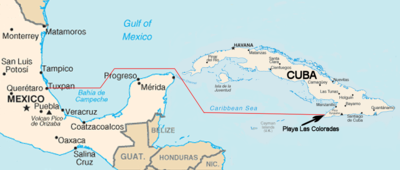
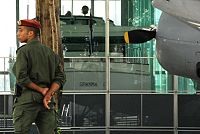
IMAGES
VIDEO
COMMENTS
The route of Granma from Tuxpan to Playa Las Coloradas. Granma is a yacht that was used to transport 82 fighters of the Cuban Revolution from Mexico to Cuba in November 1956 to overthrow the regime of Fulgencio Batista.The 60-foot (18 m) diesel-powered vessel was built in 1943 by Wheeler Shipbuilding of Brooklyn, New York, as a light armored target practice boat, US Navy C-1994, and modified ...
All that drama and mischief—all because Fidel Castro finds that horse when he needs her. Her name is Granma, and she is the 60-foot motoryacht that brought Castro to power.. Granma's voyage, which is what this story is about, constitutes one of most unlikely successes in maritime history. The story has elements of the evacuation of Dunkirk and George Washington crossing the Delaware, yet ...
By. Christopher Minster. Updated on March 27, 2019. In November 1956, 82 Cuban rebels piled onto the small yacht Granma and set sail for Cuba to touch off the Cuban Revolution. The yacht, designed for only 12 passengers and supposedly with a maximum capacity of 25, also had to carry fuel for a week as well as food and weapons for the soldiers.
A leisure yacht named Granma was secured for the trip to Cuba. Although seaworthy, the ship was not in the best shape. Badly worn gears prevented the ship from achieving significant speed, and the radio could only receive, making it impossible to communicate with allies in Cuba. The craft was overcrowded with weapons, ammunition, and 82 soldiers.
Granma yacht. On November 1956, Fidel Castro, Che Guevara, Camilo Cienfuegos, and Castro's brother, Raul Castro, along with 80 other fighters, departed from the Mexican port of Tuxpan, Veracruz and headed to Cuba on the yacht "Granma.". The 60-foot (18 meters) diesel-powered cabin cruiser, originally designed for twelve people, brought ...
You can find Granma restored to pristine condition in a glass-structure behind the Museum of the Revolution in Havana. Today, the official newspaper of the Central Committee of the Communist Party of Cuba is named Granma, after the yacht that carried Fidel Castro and 81 other rebels to Cuba's shores in 1956, launching the Cuban Revolution.
In November 1956, 82 men representing the 26th of July Movement sailed from Mexico aboard the Granma, a small yacht. Batista's forces learned of the attack ahead of time, and ambushed the ...
The overloaded yacht went round and round in the dark until the man was finally spotted and rescued. On December 2, 1956 Granma lands, or more precisely, runs aground several miles from the intended landing in Oriente province. Twenty of the 82 who sailed from Mexico on the Granma had participated in the Moncada and Bayamo attacks. Of the 82 ...
The Granma is an 18-meter yacht that was built in 1943 and purchased in Mexico in 1956 by rebels against the regime of dictator Fulgencio Batista. This group of rebels included notable figures such as Fidel Castro, his brother Raúl Castro, Camilo Cienfuegos, and Ernesto 'Che' Guevara. The yacht is a significant part of Cuban history and is now ...
It was less an invasion than a shipwreck, as one of the participants remarked. Eighty-two men had spent a week squashed into a battered 21-metre yacht called the Granma, which Fidel Castro had bought in Tuxpan on the Mexican coast.When the moment for departure came, the weather was abominable, but Castro thought that General Batista's regime in Cuba, to which the plan for the invasion had ...
Norberto Collado Abreu (February 23, 1921 - April 2, 2008) was the Cuban captain and helmsman of the yacht Granma, which brought Fidel Castro and 81 other rebels to Cuba from Tuxpan, Veracruz, Mexico, in 1956. The 1956 landing of Castro from the Granma in eastern Cuba began the Cuban Revolution which resulted in the termination of President Fulgencio Batista's government in 1959.
After his release and exile in Mexico, he and 81 other revolutionaries arrived back in Cuba on a small yacht, the Granma, in 1956. Over the course of the next two years, Castro's forces and other ...
NIQUERO, Granma.— Little known facts about the landing of the Granma yacht on December 2, 1956, will be the focus of debates by museologists and historians in the municipality of Niquero, the setting of the historic event that marked the beginning of the final stage of the struggle for Cuba's liberation.. The analyzes will form part of the 14th edition of the "La epopeya del Granma ...
The route of Granma from Tuxpan to Playa Las Coloradas. Granma is a yacht that was used to transport 82 fighters of the Cuban Revolution from Mexico to Cuba in November 1956 to overthrow the regime of Fulgencio Batista.The 60-foot (18 m) diesel-powered cabin cruiser was built in 1943 by Wheeler Shipbuilding of Brooklyn, New York, as a light armored target practice boat, US Navy C-1994, and ...
Granma is a yacht that was used to transport 82 fighters of the Cuban Revolution from Mexico to Cuba in November 1956 to overthrow the regime of Fulgencio Batista.The 60-foot (18 m) diesel-powered vessel was built in 1943 by Wheeler Shipbuilding of Brooklyn, New York, as a light armored target practice boat, US Navy C-1994, and modified postwar to accommodate 12 people.
Man behind Castro's Granma yacht lost for words over death. People walk past a graffiti that reads "Long live Fidel" in Havana, Cuba November 26, 2016. REUTERS/Enrique De La Osa Purchase Licensing ...
Granma, daily newspaper published in Havana, the official organ of the Central Committee of the Communist Party of Cuba. The paper takes its name from the yacht that carried Fidel Castro and others supporting his revolution from Mexico to Cuba in 1956. Granma was established in 1965 by the merger
Download this stock image: MOSCOW, RUSSIA - MARCH 21, 2020: Postage stamp printed in Cuba shows Compass, yacht Granma, Opening of the Revolution Museum serie, circa 1965 - 2G6J16F from Alamy's library of millions of high resolution stock photos, illustrations and vectors.
We would like to show you a description here but the site won't allow us.
Download this stock image: Thousands march at the Revolution Square during the May Day parade in Havana Tuesday May 1, 2007.(AP Photo/Greg Bull) - 2NG59WC from Alamy's library of millions of high resolution stock photos, illustrations and vectors.
When we arrived in Moscow, we went on a walking tour with Strawberry Tours to explore the Moscow Metro System. We went to about 6-7 stations and had a great ...